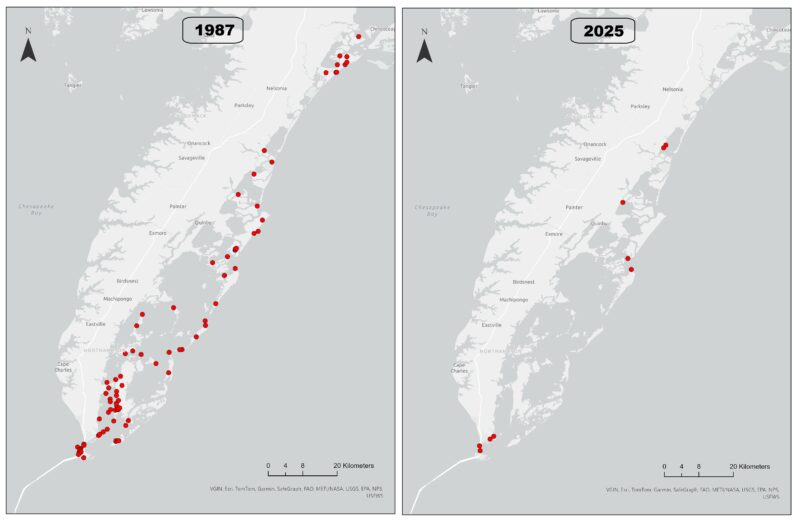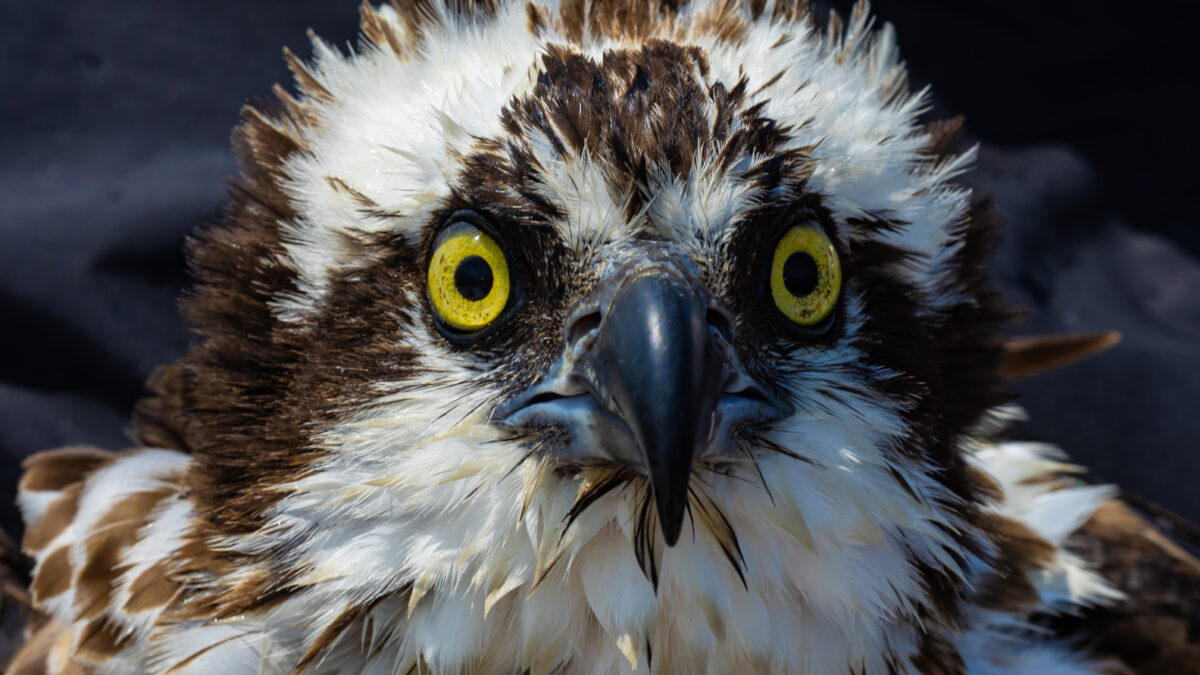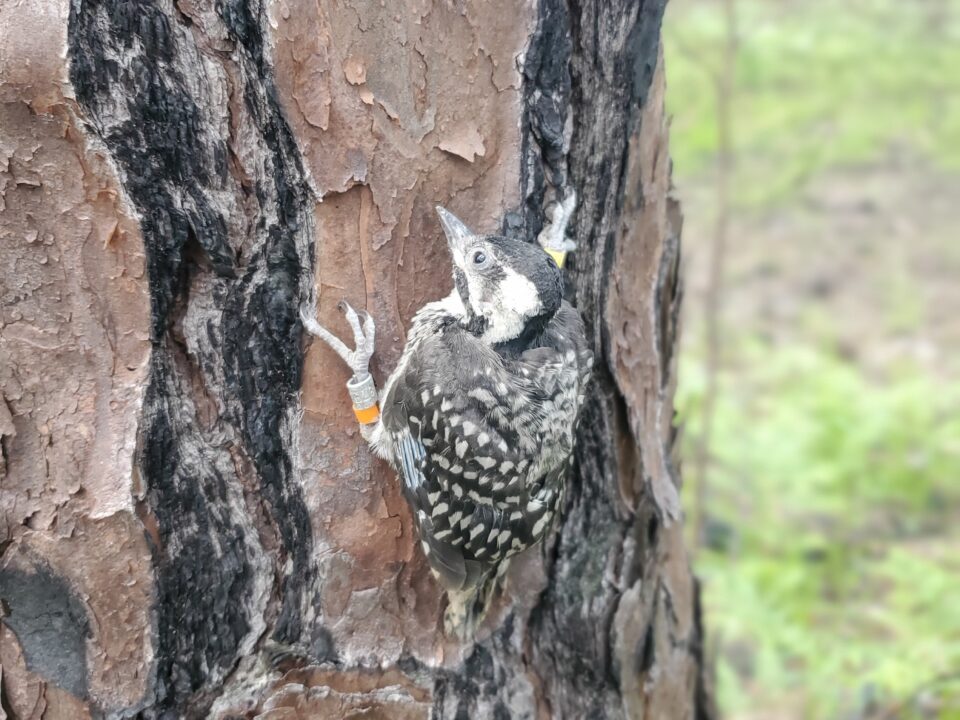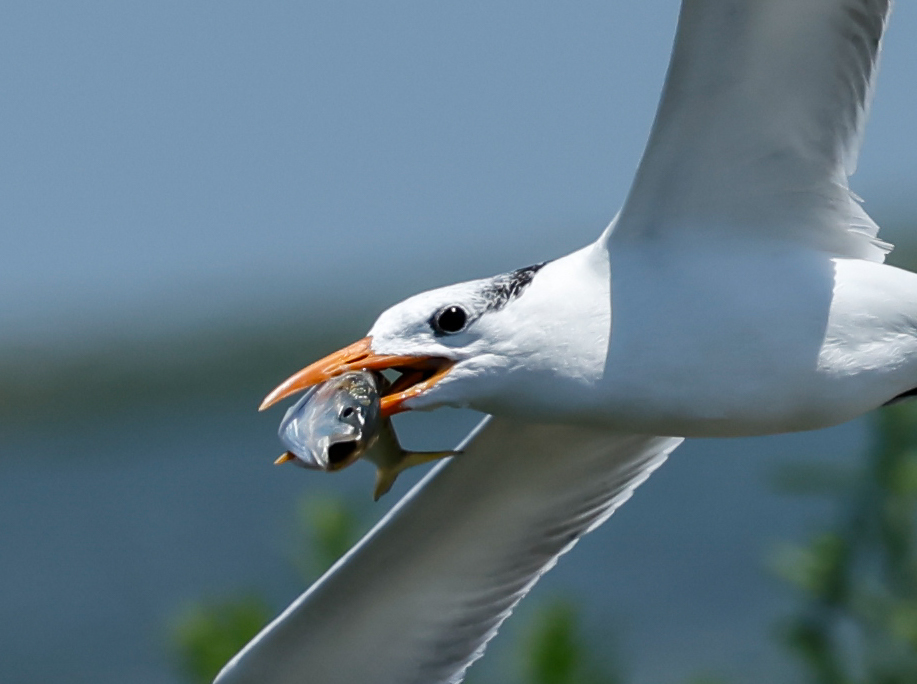Osprey population along the seaside of the Delmarva Peninsula has collapsed

Fall passage times of adult whimbrels in Virginia
April 5, 2025
Loss of coastal Peregrines continues to spike in Virginia raising concerns about the impact of avian flu
July 2, 2025News Advisory
FOR IMMEDIATE RELEASE: 16 June 2025
MEDIA CONTACTS: Dr. Bryan D. Watts, Director
Center for Conservation Biology
William & Mary
bdwatt@wm.edu
(757) 221-2247
BRIEF
(Williamsburg, VA) — The Center for Conservation Biology has completed an aerial survey of ospreys nesting along the seaside of the Virginia portion of the Delmarva Peninsula. The survey recorded nine pairs of ospreys between Fisherman Island and the Chincoteague Causeway. Compared to historic accounts and benchmark surveys conducted during the 1970s and 1980s, the 2025 survey reveals a nearly complete collapse of the population.

The seaside of Virginia’s Eastern Shore is an internationally important area for many migratory and resident bird species including osprey. The number of osprey pairs supported by this area during pristine times must have been tremendous. Harold Bailey reported “around 50” osprey nests on Hog Island alone (a small fraction of the seaside) and “several” within the middle section of Mockhorn Island during a visit in 1875. By the height of the DDT era the population had apparently been reduced dramatically. Mitchell Byrd conducted an aerial survey of the seaside in 1975 as part of a broader survey of ospreys on the outer coast from New Jersey south through Virginia and recorded 68 pairs from Fisherman Island north to the Chincoteague Causeway. A resurvey of this area by Byrd in 1987 recorded 83 pairs suggesting an ongoing recovery.

Beginning in the late 1990s, we have observed an ongoing loss of pairs from structures that were used consistently for nesting over the previous 25 years. The number of vacant territories has grown over time with many having been lost over the past decade. The objective of the survey conducted in May of 2025 was to establish another benchmark for comparison to previous surveys. The survey suggests that the population has declined by nearly 90% since the benchmark established during the 1980s. The underlying causes of this population decline are unclear. Although there have been changes in nesting substrates (e.g. duck blinds, dead trees, navigational aids, nesting platforms) over time, the availability of nesting substrate does not appear to be a primary factor. Suitable structures remain widely available and many substrates that were used for extended periods are now vacant. It is possible that bald eagles may have impacted osprey along the seaside. The bald eagle population within the area has more than tripled since the 1980s. However, the density of eagles continues to be a small fraction of that found within the upper tributaries of the Chesapeake Bay where ospreys continue to thrive. The most likely cause of the decline is prey availability. However, no osprey diet studies have ever been conducted within this site, and we know very little about trends in fish availability. During the 1970s and 1980s the highest density of nesting pairs was skewed to the southern portion of the area around Fisherman and Mockhorn Islands. These birds could be observed flying out to the mouth of the Chesapeake to forage. Pairs have declined by more than 90% within this portion of the study area.




